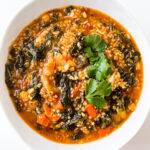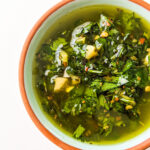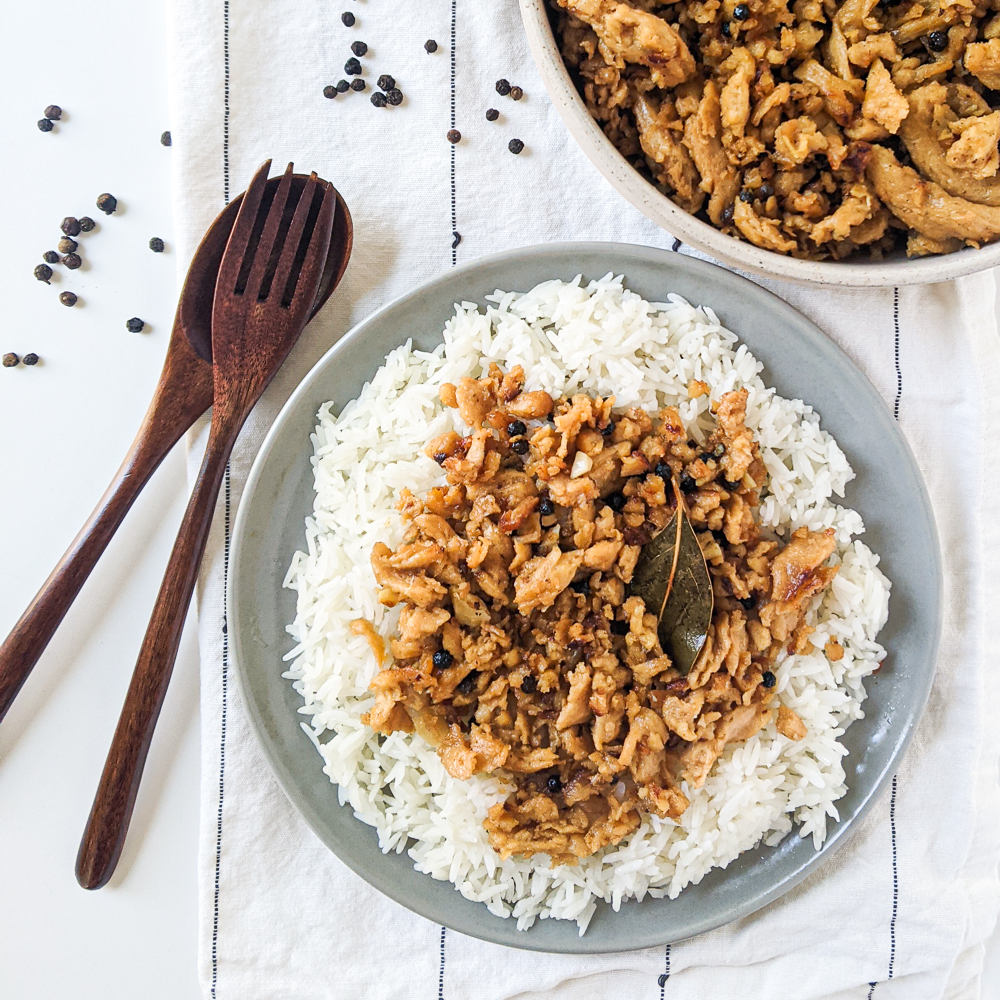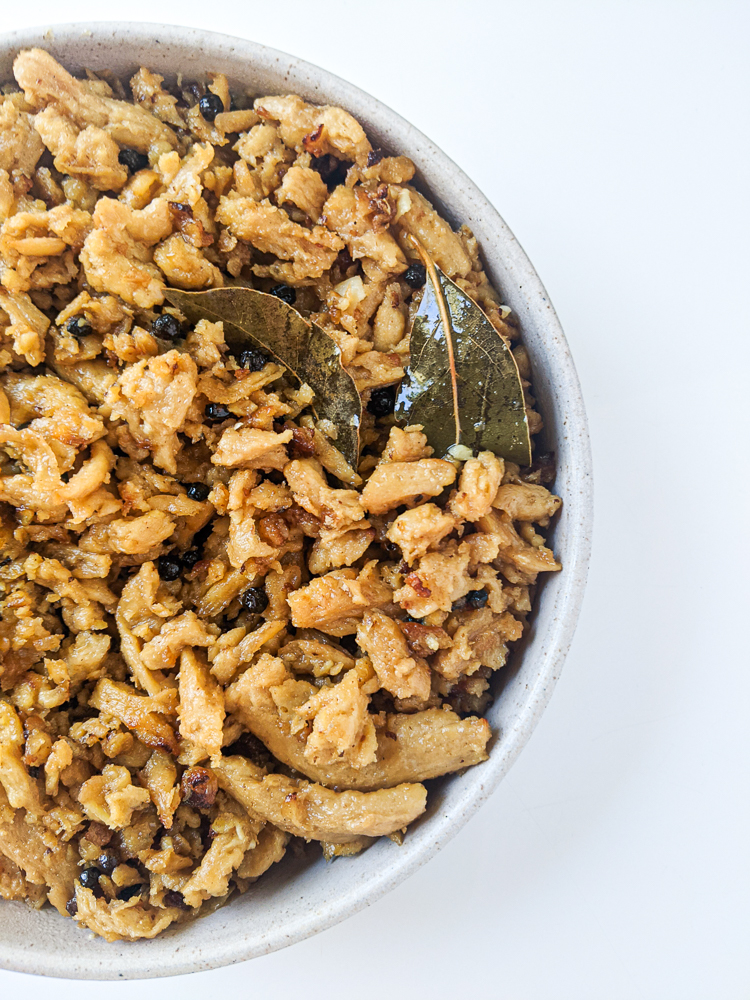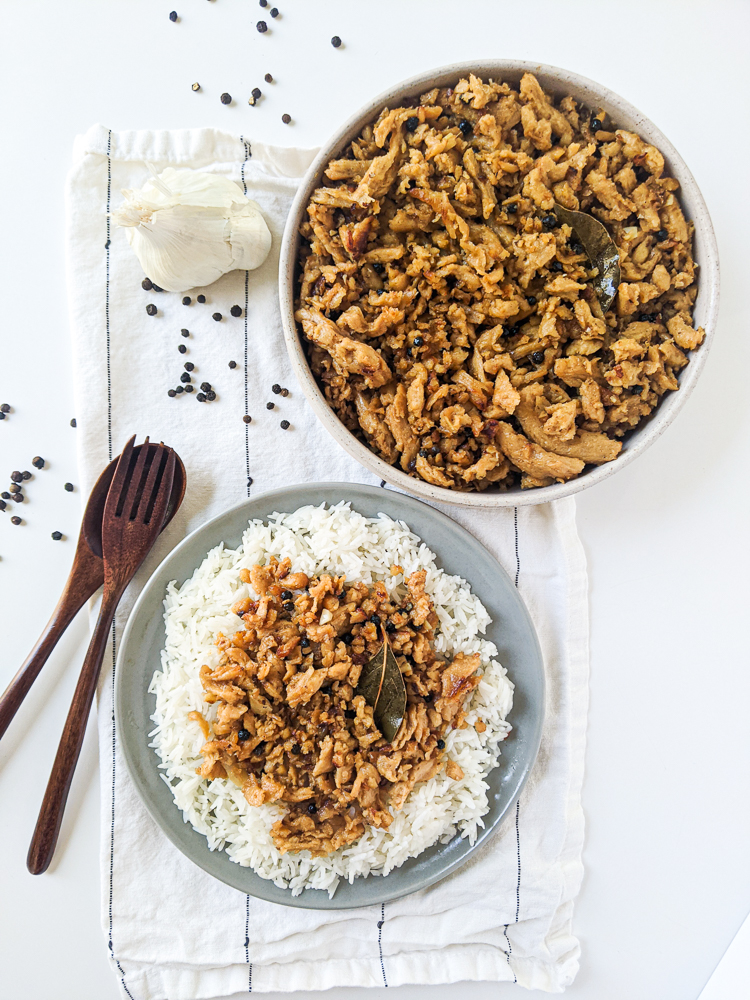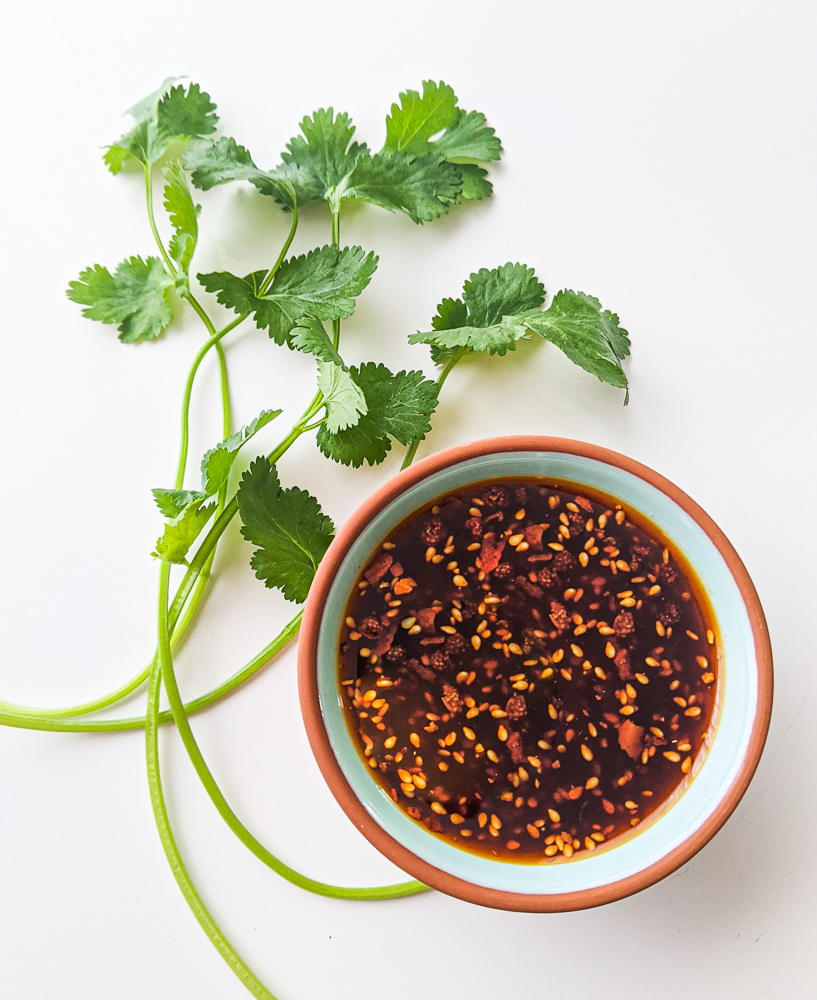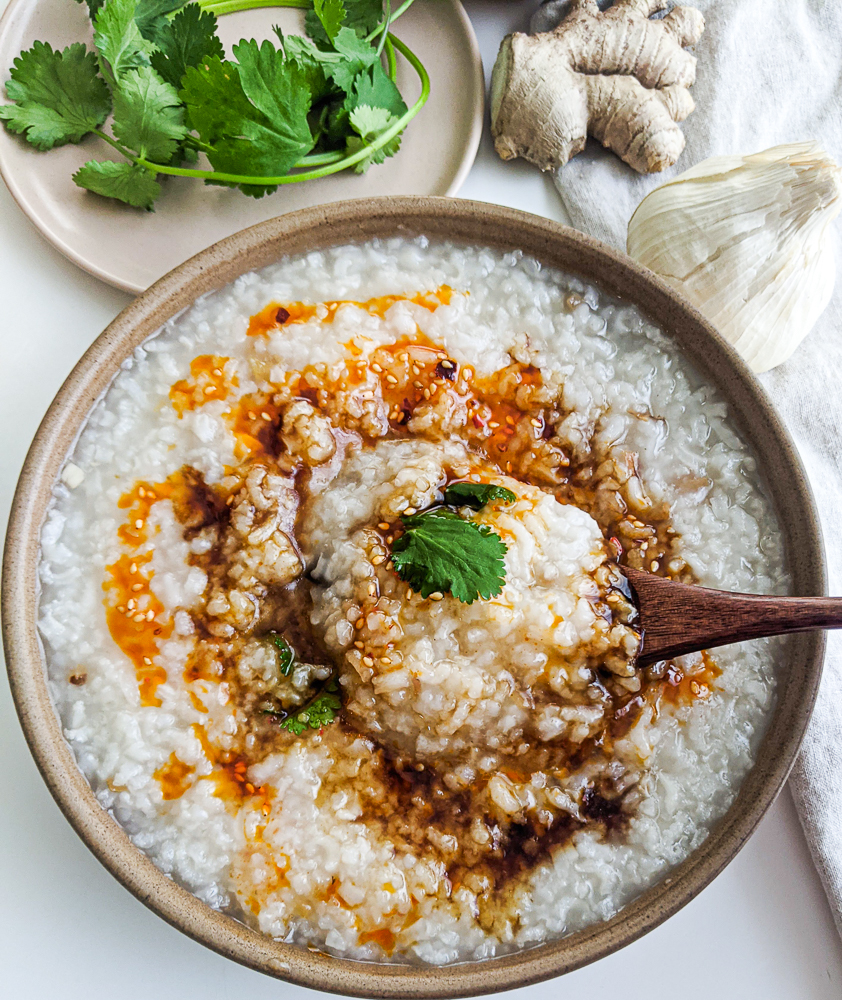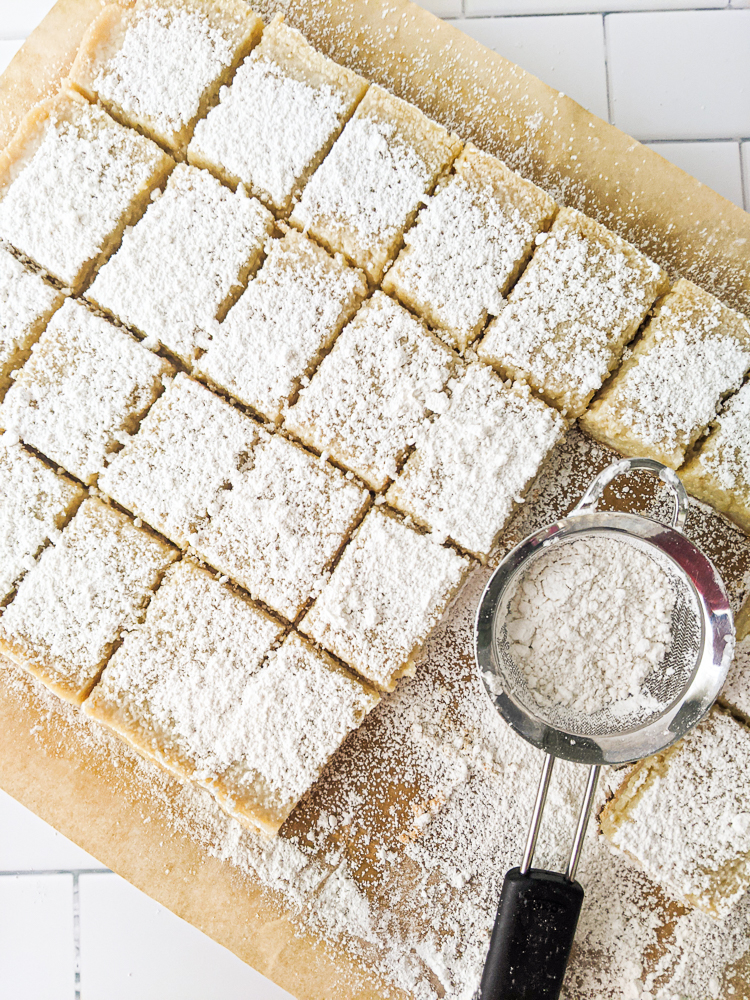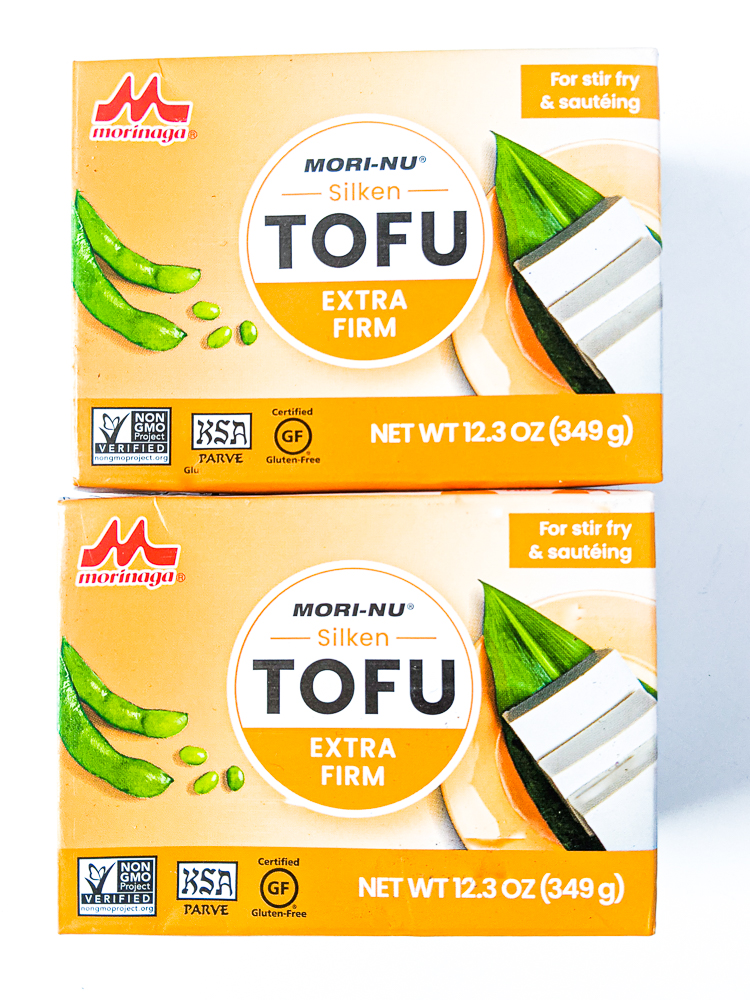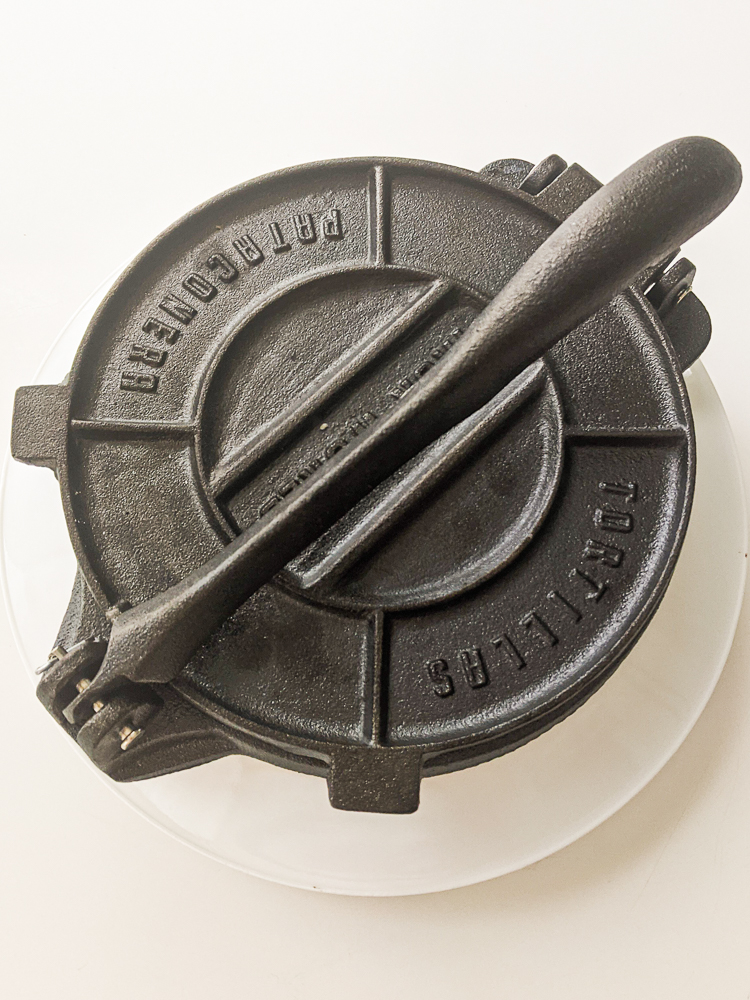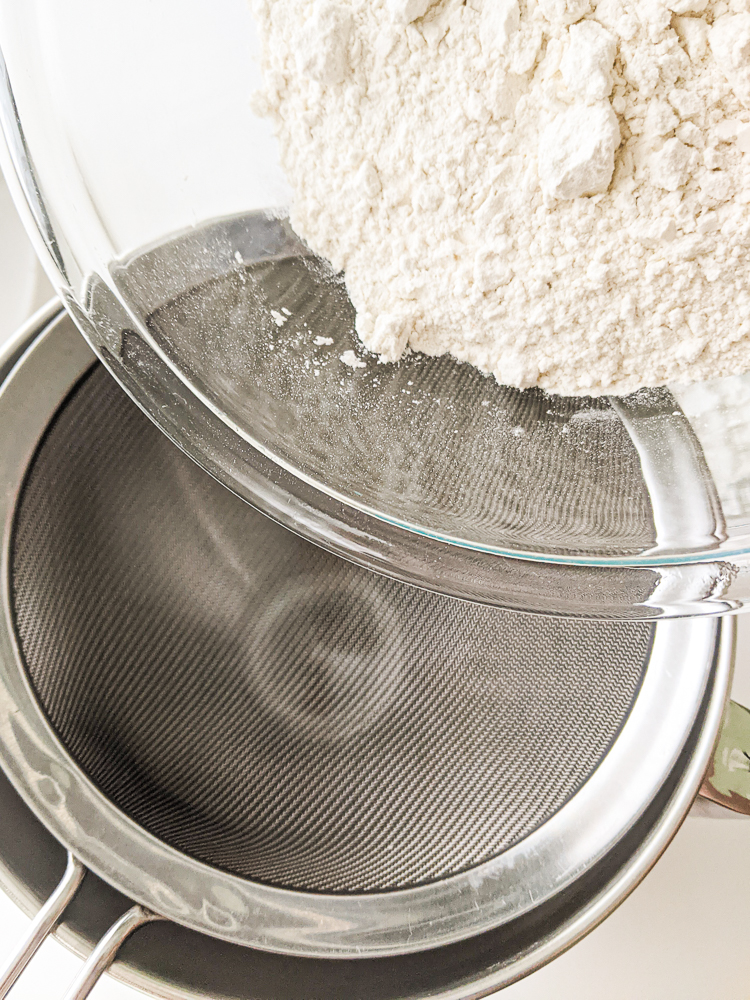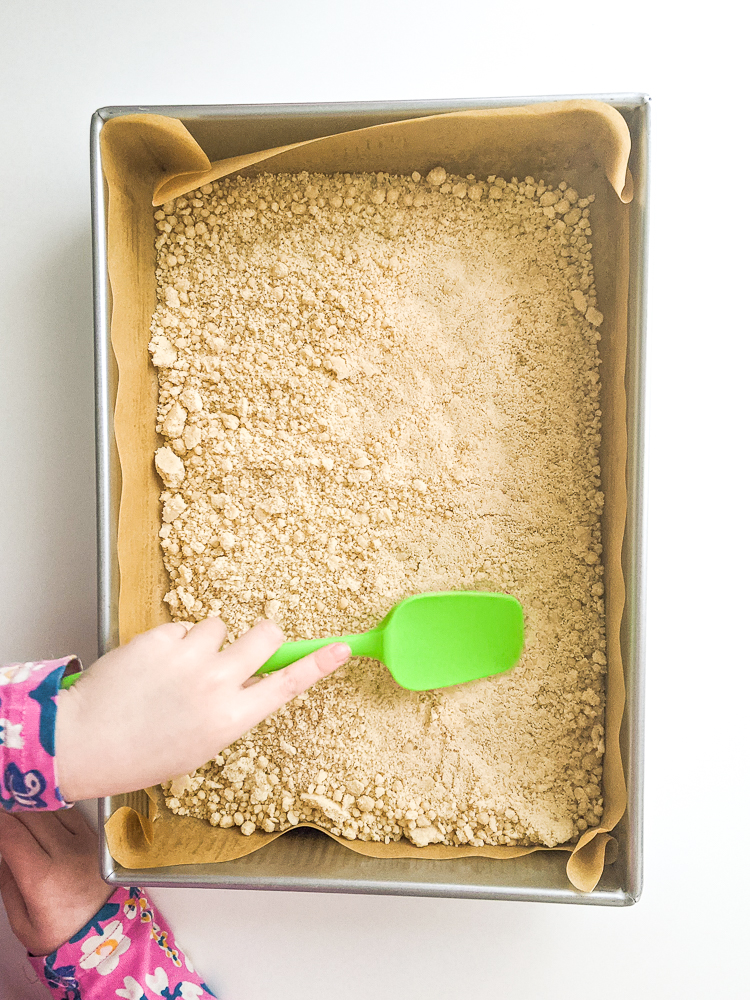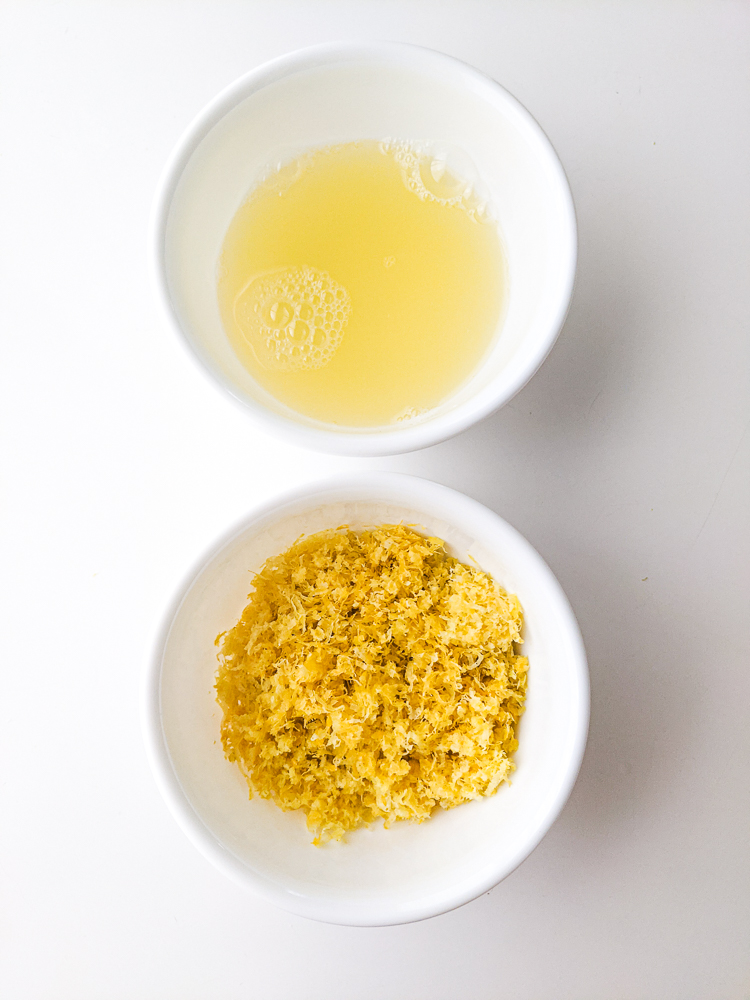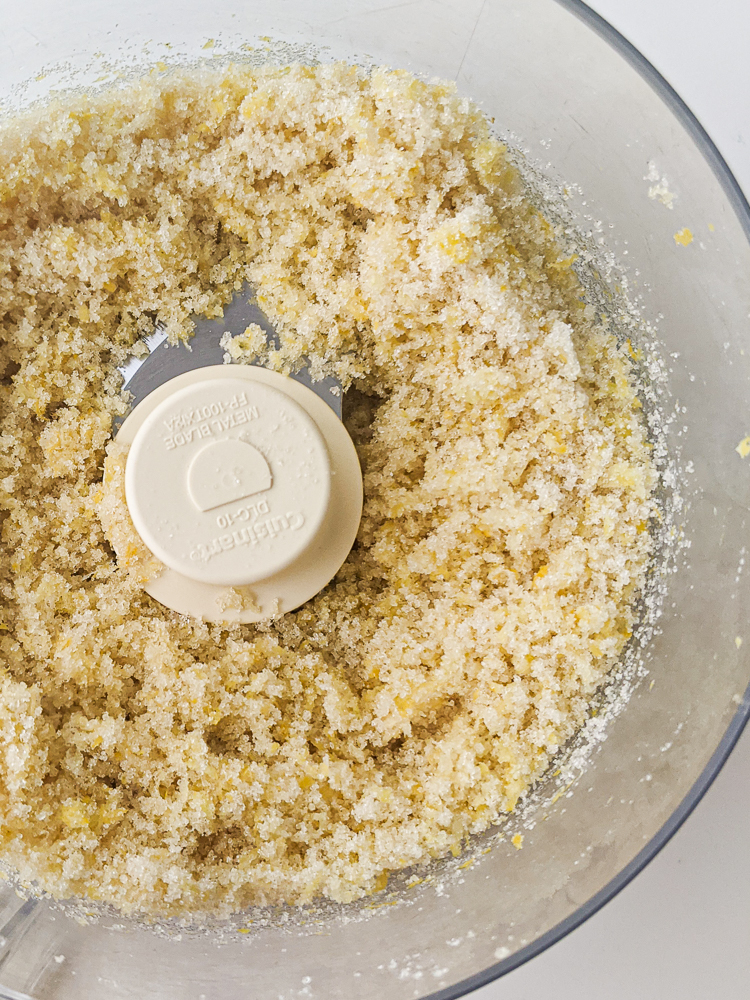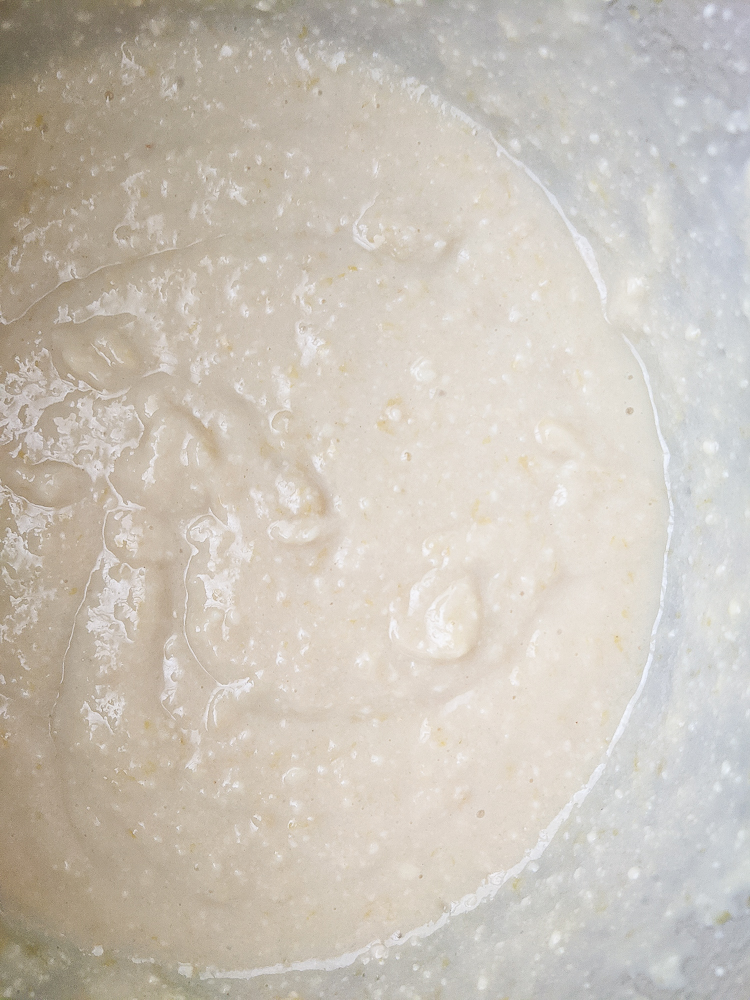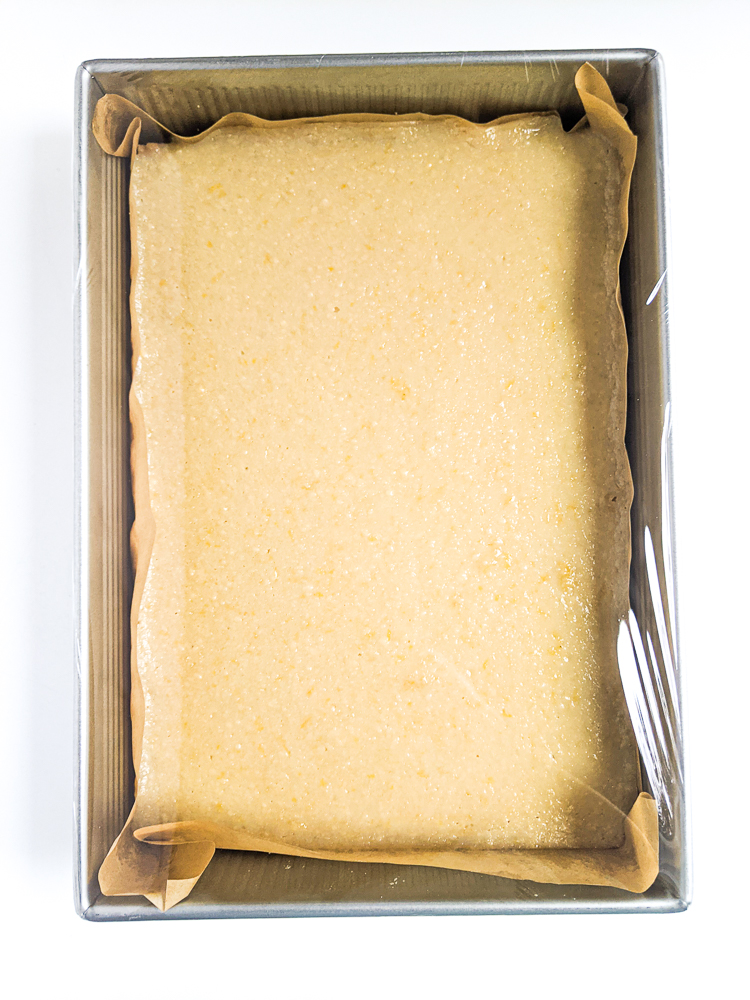Affiliate Disclosure: As an Amazon Associate, I earn from qualifying purchases. Thank you for supporting Bakeroise.

Hola! Today I bring you an Argentinean-inspired chimichurri recipe. It’s ridiculously easy, simple to make and only has to sit for an hour for the flavors to marry. Everyone I know loves this chimichurri recipe and I hope you do too.
I first tried Argentinian chimichurri about a decade ago when my partner swept me off to a month-long trip to Buenos Aires for my birthday. We spent that whole month eating our way through the city trying as many different foods as possible. Oh was it an exciting time! Vegetarianism, let alone veganism, wasn’t on my radar at the time so I fully indulged in all the goods from choripan and asados to helado de dulce de leche and medialunas.
My favorite thing, however, wasn’t a dish or even a dessert. It was chimichurri!
Argentinian chimichurri is a naturally vegan condiment that is used liberally throughout Argentina, Paraguay and Uruguay, the countries next door. It is traditionally made with loads of parsley, oregano, garlic, chili peppers, red wine vinegar, salt and olive oil. It is generally used as a topping for meat and as a sauce for empanadas. Nowadays my favorite way to use it is in my vegan burgers and, of course, vegan empanadas.
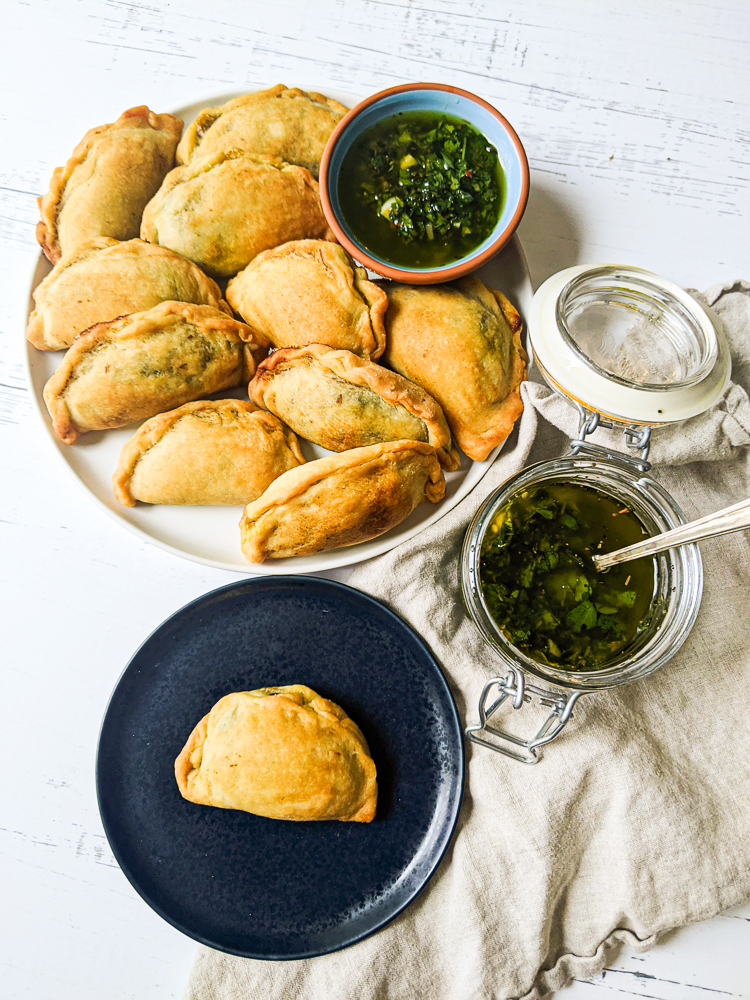
Despite chimichurri containing pepper flakes, it isn’t meant to be spicy at all. After all, spicy food was just something that never caught on down there. That’s not surprising since most of the Argentine population are white people whose families emigrated from European countries like Italy, Spain and Germany – all countries with cuisines that don’t have an emphasis on spicy food. I’m a little confused though because this blog says that chimichurri is traditionally very hot so … if anyone can enlighten me, please do! Then again, maybe I’m just centering myself and thinking from the perspective of someone with a rather high heat tolerance and perhaps chimichurri might actually be “spicy” to other people. Hmm.
Speaking of their food culture and history, the origins of chimichurri are actually a little muddled so I’m going to straight up let you do your own research and decide what you want to go with! I did my own research of course but as a first-generation Filipina-American whose parents come from the Philippines, a country that was under colonial rule, I always feel weird when there’s some kind of narrative that something possibly started because of a white person when there were actually a bunch of indigenous people around. Even if said white person was there to fight with and for the indigenous group. Jim McCurry ring a bell? Chimichurri? Jim McCurry? And we don’t even know if it’s true so I don’t really want to spread misinformation on this blog.
I digress. I like a little bit of spice so here we are. I know, I know. I’m changing things. Remember, this is an inspired recipe that’s meant for me and other people who love heat! And at least I’m not putting cilantro in it even though I love it! That’s a straight up different herb. So there.
This recipe is adapted from Karina’s chimichurri recipe at Cafe DeLites. I chose her recipe because her chimichurri is the one that most strongly resembles the kind we had in Buenos Aires. I wanted the small-but-big-enough chunks of each ingredient and I appreciated that she chops her ingredients with a knife instead of a food processor. I don’t want to puree my chimichurri and in general I don’t like these kind of condiments (think salsa) to be blended. I want thick chunks of what makes it good.
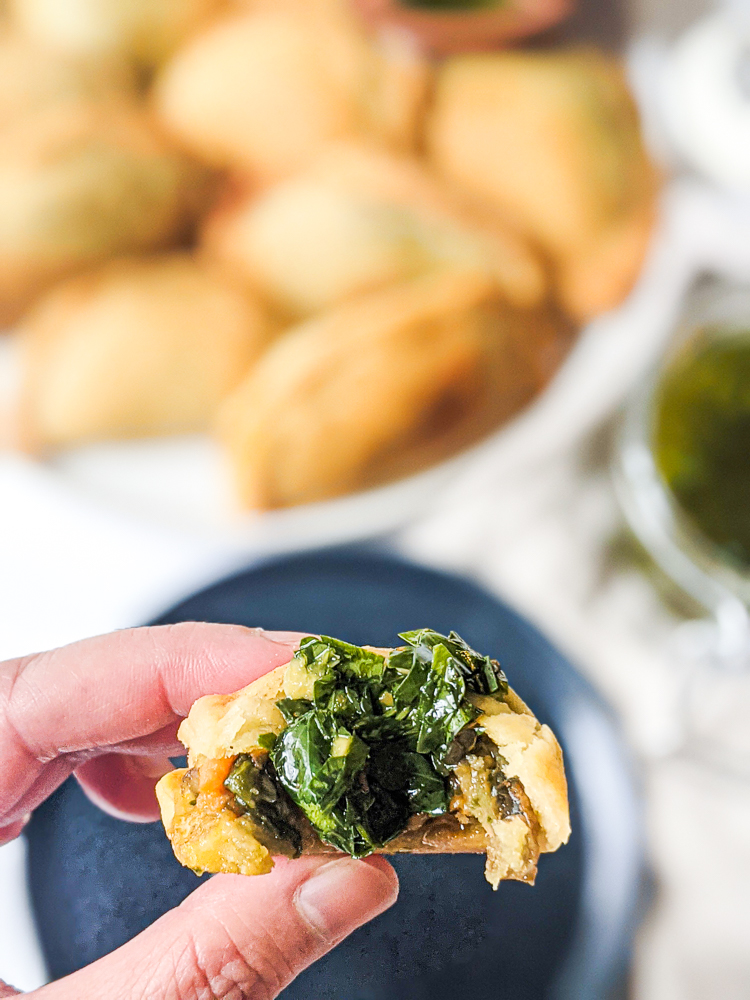
The ingredients I used for this Argentinean-inspired chimichurri were good olive oil, red wine vinegar, two bunches of parsley, garlic, red chili pepper flakes, dried oregano, salt and freshly ground black pepper to taste. My recipe also yields a higher amount because chimichurri never lasts long in our house.
While Argentinean chimichurri is traditionally made with aji molido flakes from Argentina, I opted to use the regular ol’ red chili pepper flakes which pack way more heat. The flakes are made of different peppers, including cayenne, and are also mixed with the dried pepper seeds which makes it more spicy. So obviously the function the pepper flakes serve in this recipe isn’t necessarily for flavor but for heat.
This Argentinean-inspired chimichurri is pretty easy to make. Just rinse and dry the preferably organic parsley (since we’re not cooking it). Then remove the leaves from the parsley which is super easy and takes a few minutes just by lightly pinching around the stem and sliding it down to remove the leaves. Then roughly chop the parley leaves as little as you’d like along with the garlic. Then put all the ingredients together in a bowl and let sit for an hour, covered. Then boom! You’ve got yourself chimichurri that’s ready to be used and eaten.
Feel free to adjust the quantities of things according to your preference. All spice levels are different so I wouldn’t be surprised if my own recipe was too spicy or not spicy enough for some people. Play around with it! Make it yours.
If you use this Argentinean-inspired chimichurri recipe, let me know! Hope you enjoy.
PrintArgentinian-Inspired Chimichurri
This is recipe is for Argentinean-inspired chimichurri. It’s inspired because it has more heat than traditional chimichurri!
- Prep Time: 20-30 minutes
- Total Time: 20-30 minutes
- Category: Condiment
- Cuisine: Argentinean
- Diet: Vegan
Ingredients
- 2 bunches of parsley, leaves finely chopped
- 4 cups good olive oil
- 3 tablespoons of water
- 8 cloves garlic, finely chopped or minced
- 4 tablespoons red wine vinegar
- 1 tablespoon red chili pepper flakes
- 1 tablespoon dried oregano
- Salt to taste – I use at least four palmfuls.
- Ground black pepper to taste
Instructions
- Mix all of the ingredients together and let sit for one hour for the flavors to marry.
Notes
- Adjust ratios as needed to fit your needs.
- Bring to room temperature before serving.
- Storage: 3-4 weeks in the fridge





